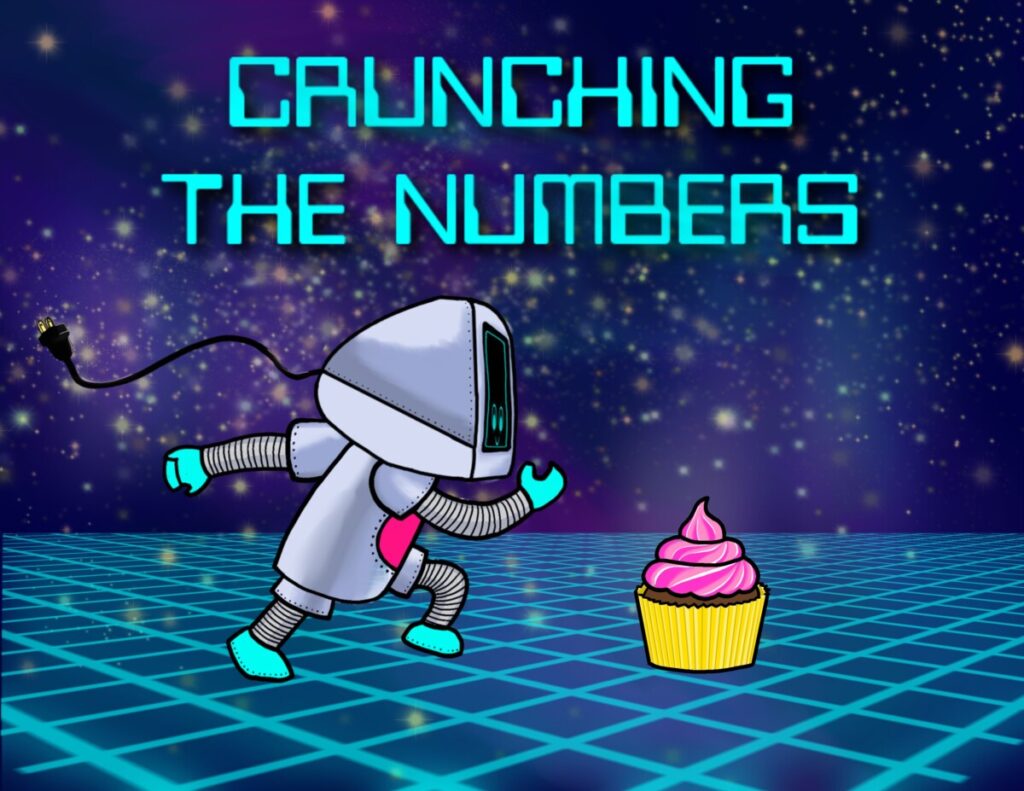
Episode title: Crunching the Numbers
Preview
In this episode, we introduce the concept of vectors in the plane. Intuitively, a vector is just a straight arrow in the plane from one point (the tail of the arrow) to another point (the head of the arrow).
You have probably encountered grid coordinates in various contexts, such as maps. Those experiences will probably allow you to get an intuition for vectors, just from playing the following game.
DOT loves snacks! DOT is just learning to walk. For now, DOT can walk in the $x$-direction (right/left) and the $y$-direction (up/down). Give DOT directions to their snack by specifying the components (the differences in coordinates) of the appropriate vector from DOT to their snack. Help DOT collect as many snacks as you can!
Play
Practice
A vector $\vec{V}$ may be denoted in rectangular components by its $x$-component $V_x$ and its $y$-component $V_y.$ That is, we use the notation $\vec{V} = \langle V_x, V_y \rangle$. $V_x$ is the $x$-component of the vector $\vec{V}$ and it represents the difference between the $x$-coordinates of its head and its tail. $V_y$ is the $y$-component of the vector $\vec{V}$ and it represents the difference between the $y$-coordinates of its head and its tail.
This means that $V_x$ will be positive if the arrow points to the right and negative if it points to the left. It also means that $V_y$ will be positive if the arrow points up and negative if it points down.
Apply
In the following problem, directions are given in terms of east/west and north/south. On a map, east is to the right, so we consider east to be the positive $x$-direction and west to be the negative $x$-direction. Similarly, on a map, north is up, so we consider north to be the positive $y$-direction and south to be the negative $y$-direction.
When you are drawing a picture or a diagram to help you understand a real-world situation, it’s not always important that your diagram be drawn perfectly to scale. Make sure you include points and vectors that represent all the relevant information. Try to position your points and vectors so that they accurately represent the relationships between the objects in the real-world situation.
If two vectors have the same $x$-component and the same $y$-component, then we consider these two vectors to be equivalent. This means that Anna’s total journey and the bird’s total journey are equivalent.



